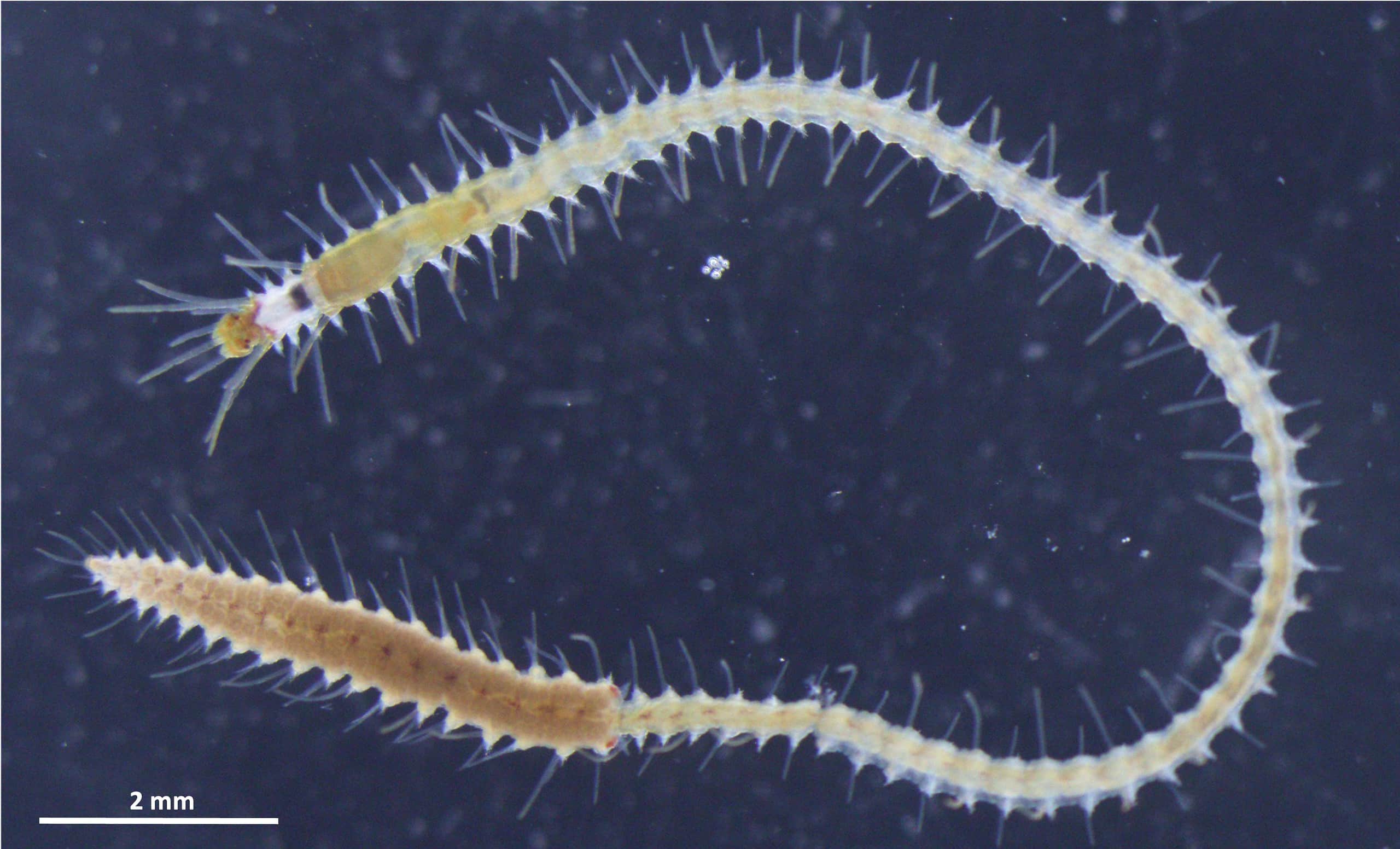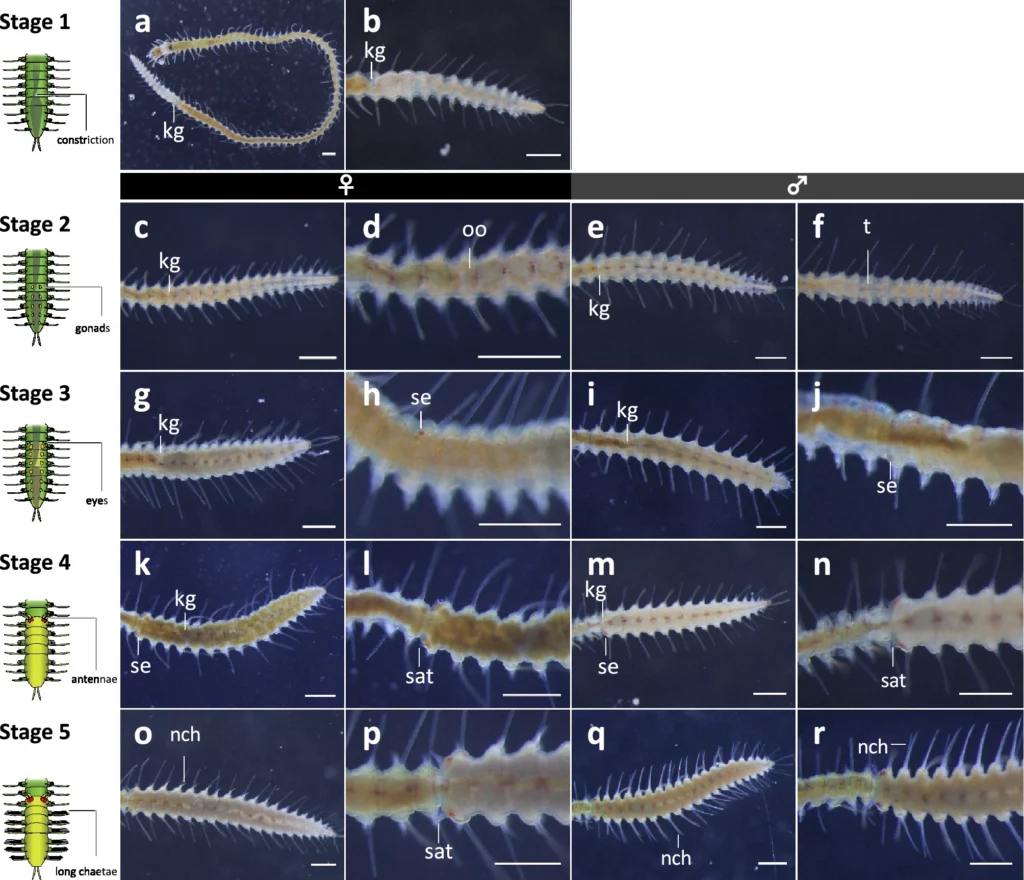Life always finds ways to surprise us. A small Japanese sea worm (Megasyllis nipponica) detaches its rear end from the rest of its body, which then swims off to find a similar autonomous tail of the opposite sex to reproduce. But how this actually happens has been a mystery for researchers — until now.

A team of researchers from the University of Tokyo set out to find out how these sea worms go through the process of stolonization — the development of these unusual parts. The detached part of the body, called the stolon, carries the worm’s eggs or sperm. It swims around by itself and develops eyes, antennae and a brain, meaning it becomes entirely independent of the original body.
Toru Miura and his colleagues found through observations that this process starts when the worms reach sexual maturity. The head starts to develop in the anterior part of the developing stolon. Sense organs, such as the eyes, and swimming bristles, form soon after. After the stolon is detached, the brain and nerves also begin to develop.
The researchers also looked at the gene expression patterns of worms that were reaching sexual maturity and found that a group of genes involved in head formation was more actively expressed in the head region of the stolon. These genes aren’t typically this active in the middle of the body, but they become so during gonad development.
“This shows how normal developmental processes are modified to fit the life history of animals with unique reproductive styles,” Miura said in a press release.

The team also found that another set of genes, known as Hox Genes, which determine the body’s segmentation, are consistent throughout the worms. This surprised the team, who believed those genes would be expressed differently toward the ends of the worms.
“This indicates that only the head part is induced at the posterior body part to control spawning behavior for reproduction,” Miura said. As a result, the stolons lack a digestive tract and instead have uniform body segments (except for the head and tail), the researchers explained.
This is the first time a study has looked at the development of these stolons. It’s also the first study to look at this unique reproductive method. Next, the researchers want to uncover what determines whether the stolon produces eggs or sperm.
“We would like to clarify the sex determination mechanism and the endocrine regulations underlying the reproductive cycles in syllids,” Miura said.
The study was published in the journal Scientific Reports.


